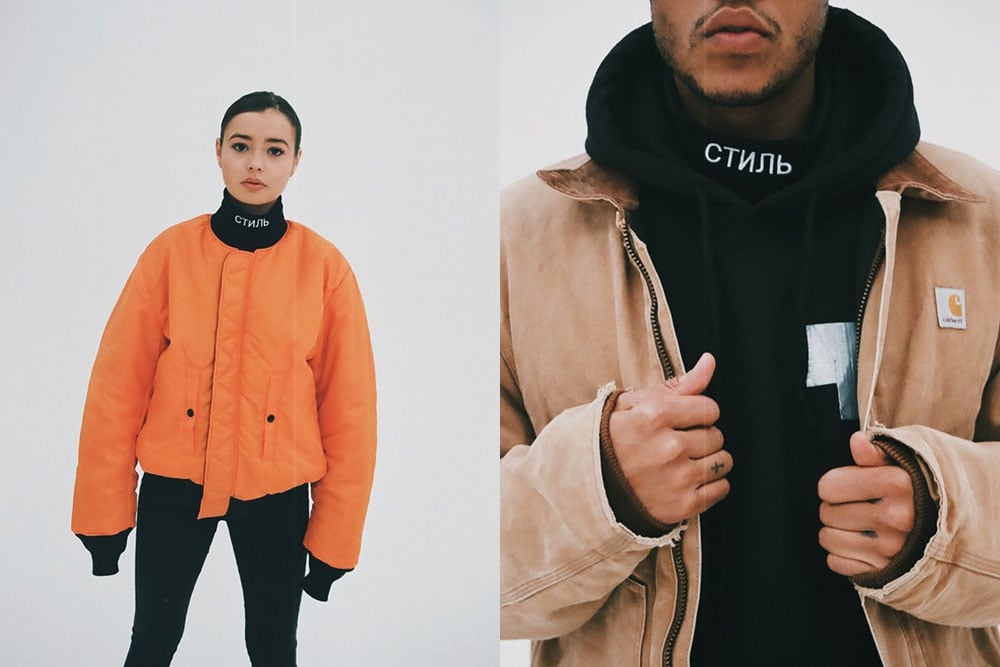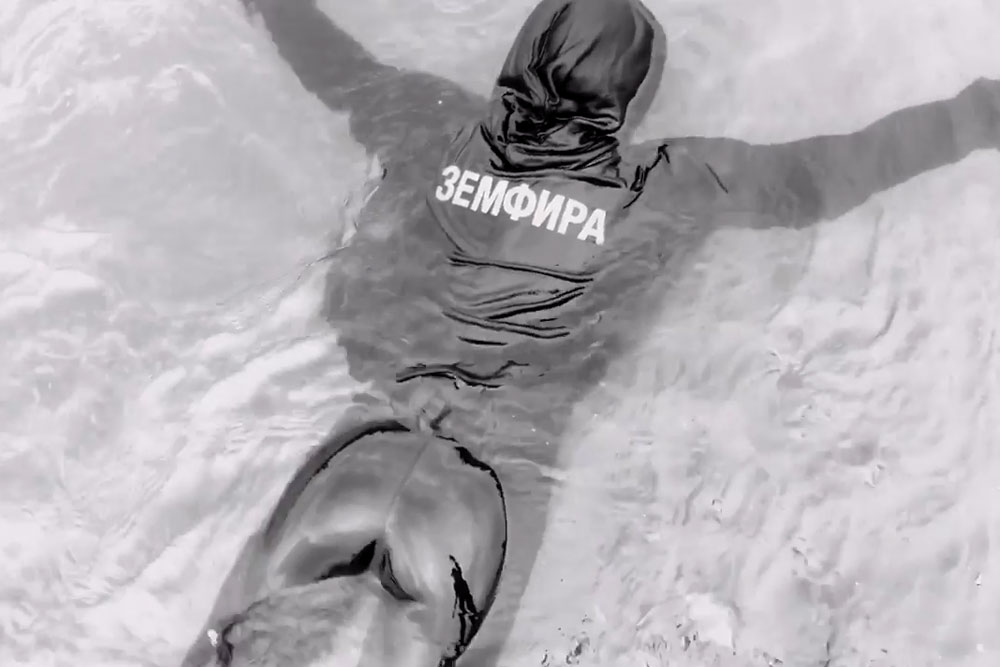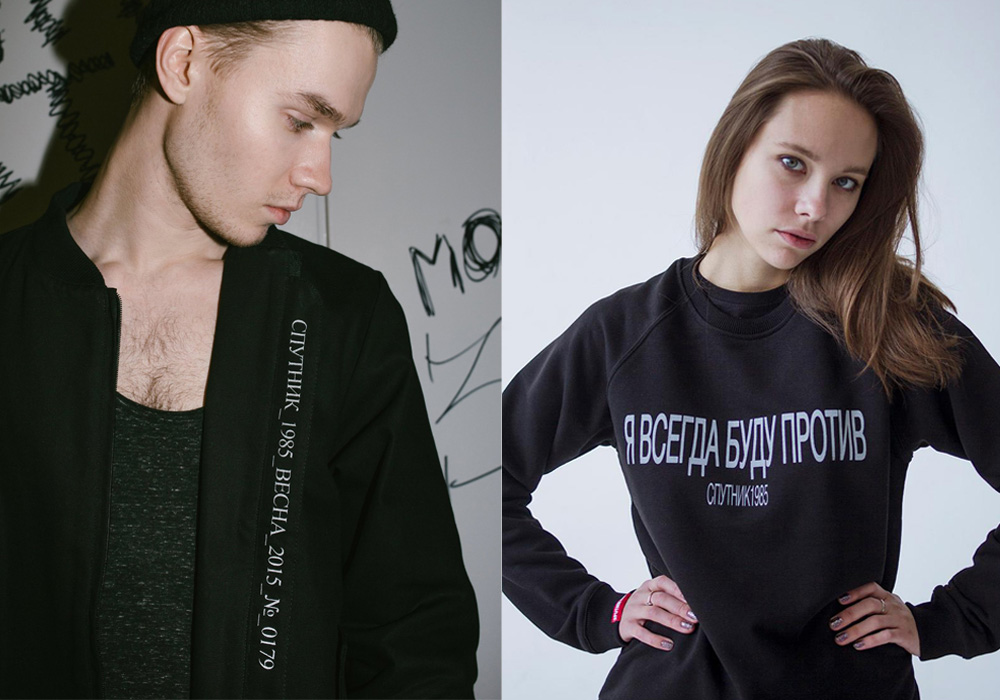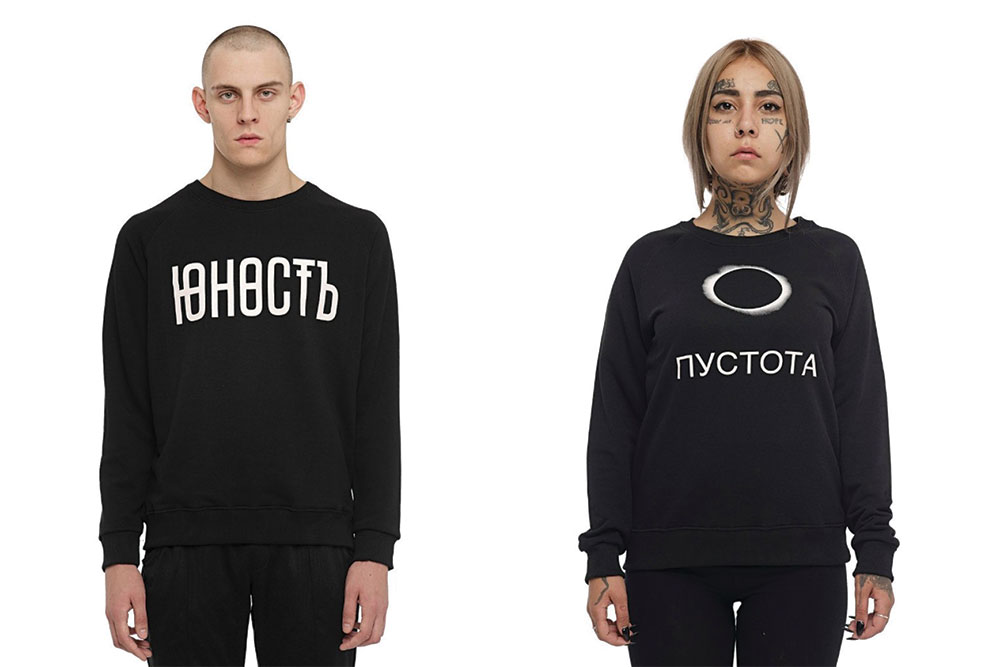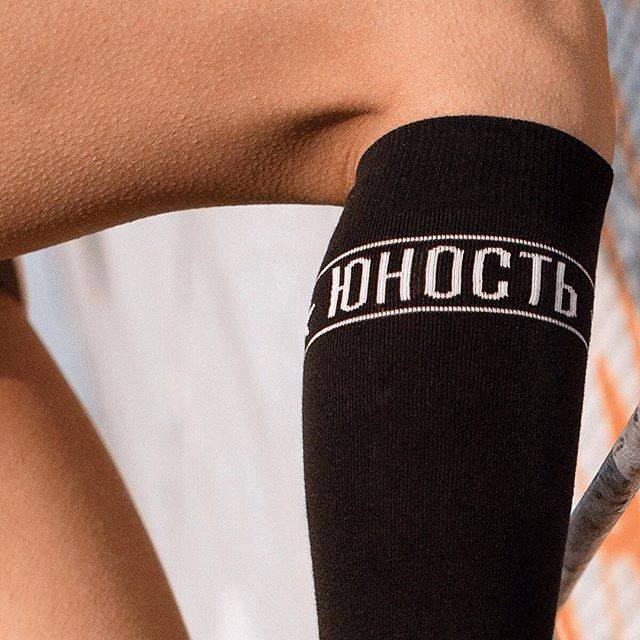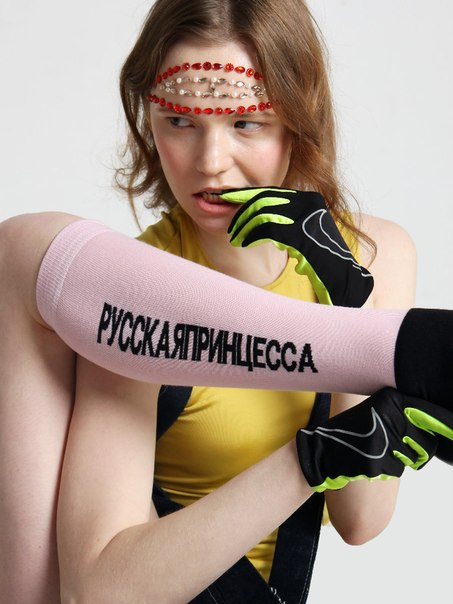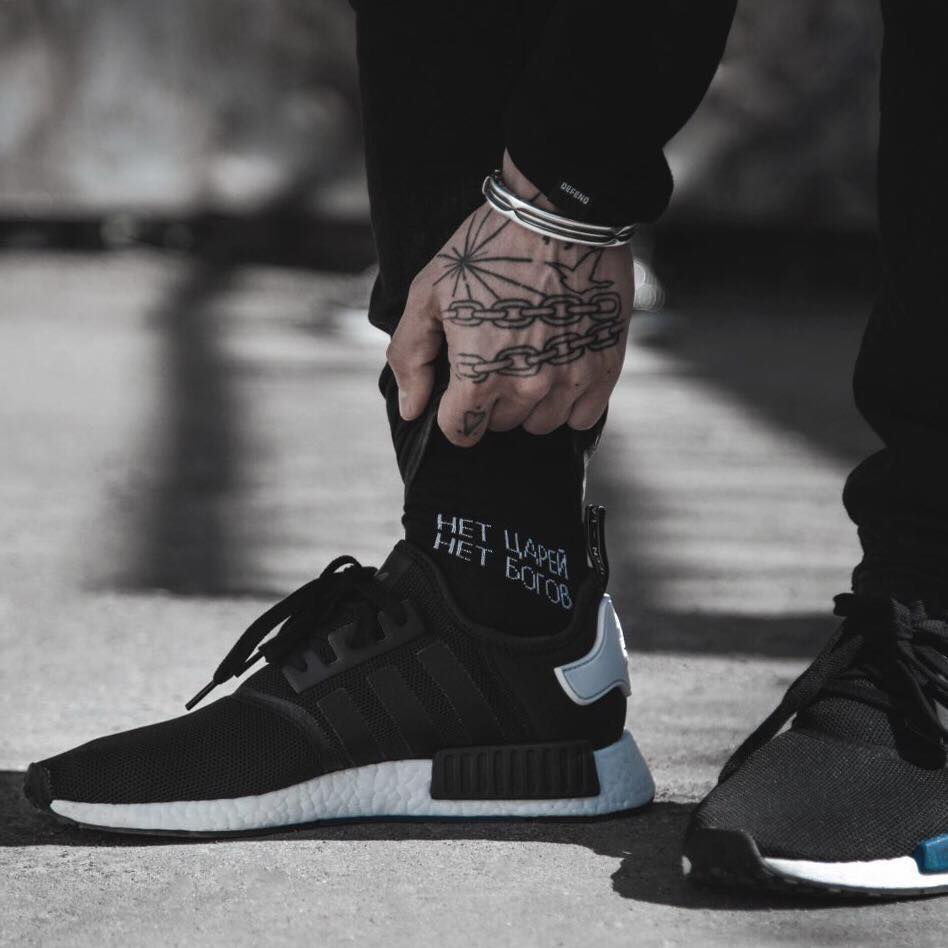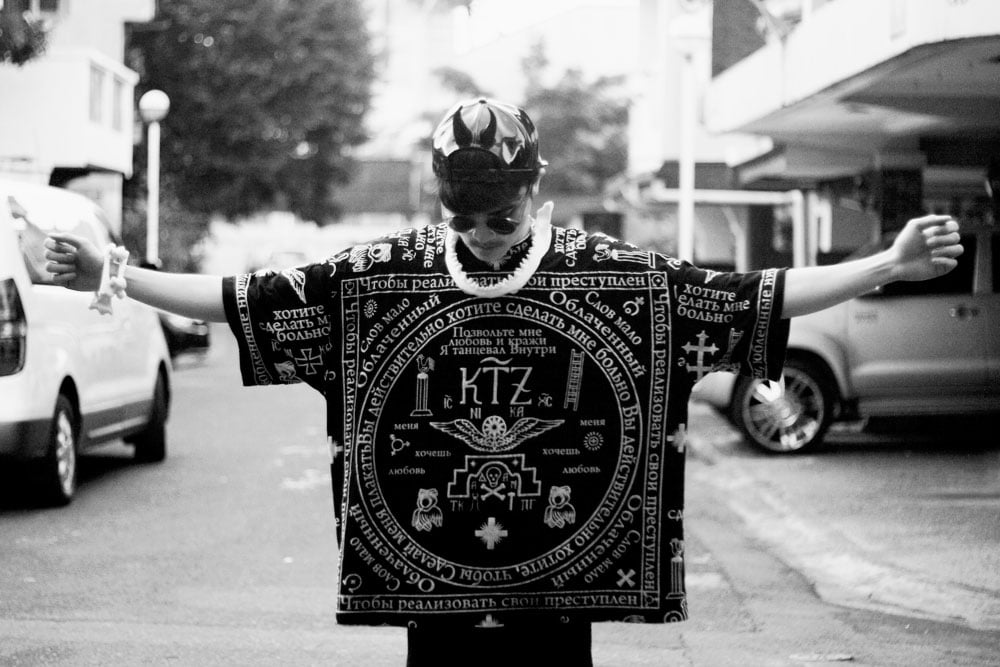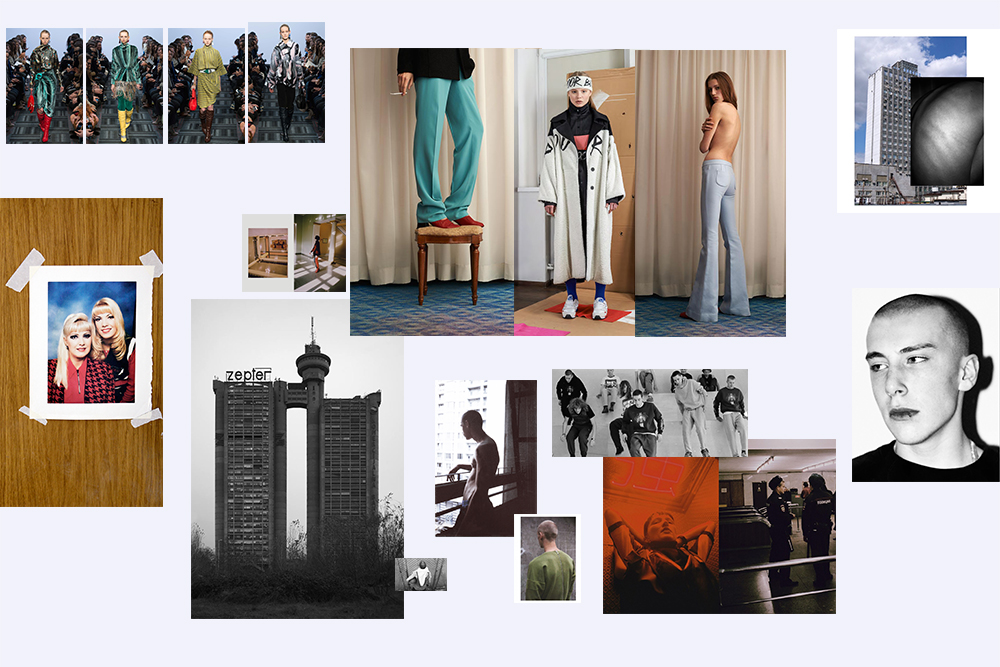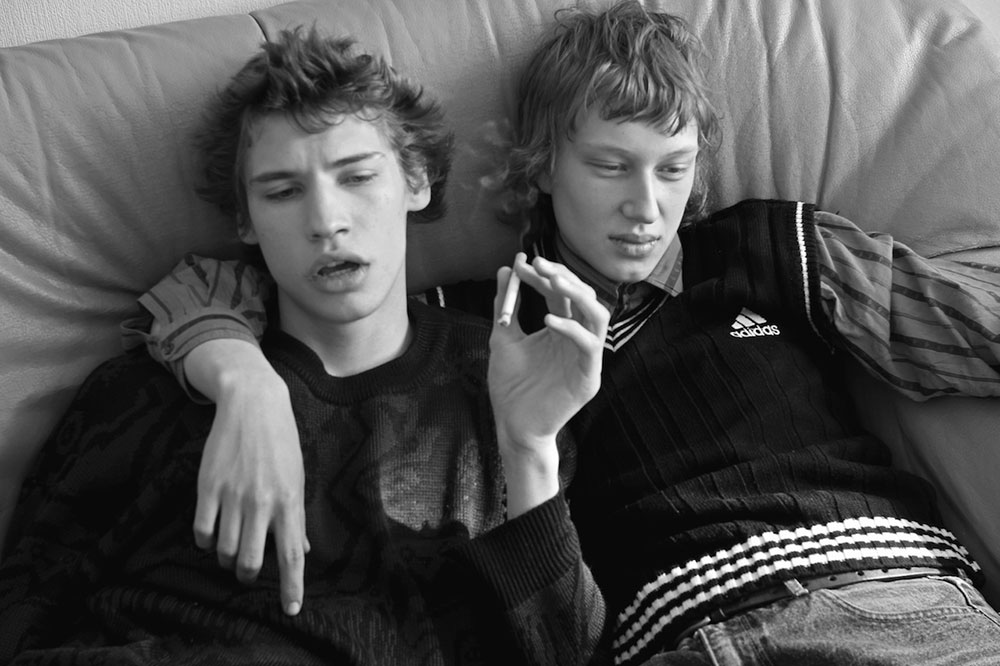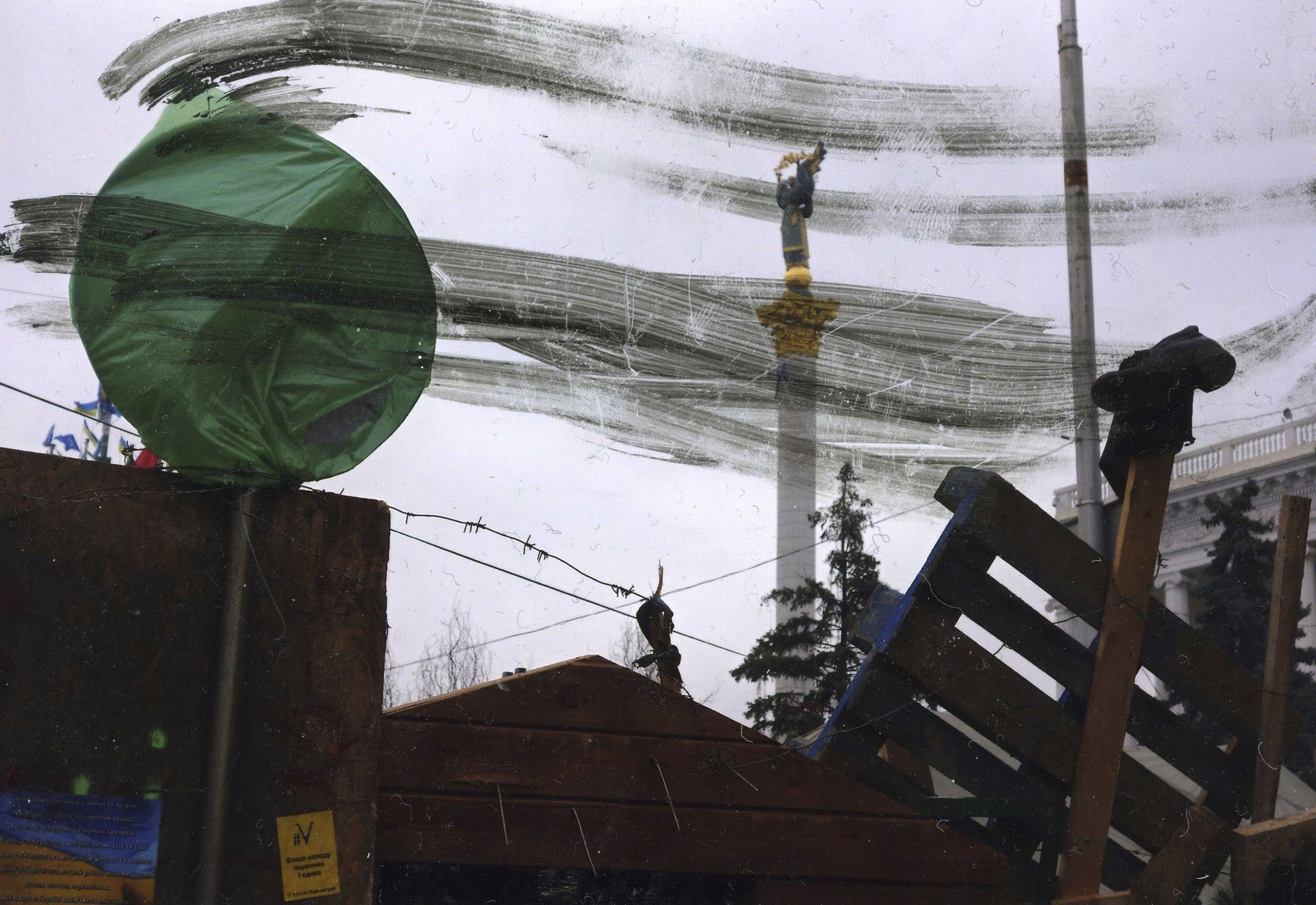Spelling it out: why Cyrillic slogan streetwear is the new punk uniform for post-Soviet teens
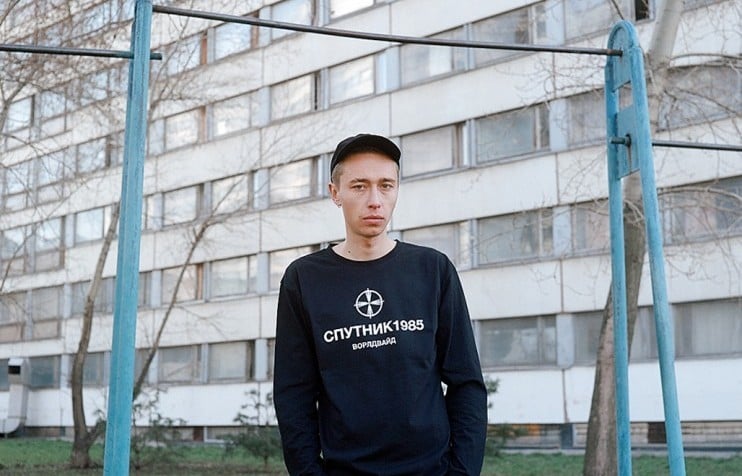
Slogan sweatshirts with Cyrillic script have recently found their way onto the catwalks of the west. But for today’s post-Soviet teens they are a throwback to a youth they never had
From small eastern European labels to outrageous militarist Army Of Russia designs to high fashion brands like Gosha Rubchinsky and Vetements, prints in Cyrillic script and the styles of the Perestroika and 90s-era are in-demand like never before. Simultaneously enticing and repulsive for many Russians and Ukrainians who lived through the times, they intrigue foreigners and the younger post-Soviet generation with their exoticism and the wholesome if slightly trashy image. But the brands catering to the tastes are almost exclusively high-end, leaving anyone that’s not Kim and Kanye’s daughter or oligarch offspring out of the fashion loop.
That’s where young Russian streetwear brands like Volchok, Sputnik 1985, Mech, LECHARLATAN, R-SSA, as well as Podmost and Syndicate from Ukraine, come in. Several of these had existed before Cyrillic prints and 90s nostalgia became a fully fledged trend, and have even contributed to the hype. Made locally, available from 1300 rubles ($20) a t-shirt, and better quality than most mass-market brands — they are an absolute steal. Moreover, many labels put out small collections with some designs never restocked they eventually sell out, making the pieces unique. When Sputnik 1985’s “I Will Always Be Against” sweatshirt (“Ya Vsegda Budu Protiv”, a phrase made popular by Yegor Letov of the Russian punk band Grazhdanskata Oborona) and Volchok’s “Youth” (Yunost) t-shirt sold out, in both cases, all hell broke loose in online comments. Still, despite limited stock, you can’t go out in Russia without encountering at least one person wearing their designs. The recent launch of Sputnik 1985’s new collection Les Fleurs Du Mal attracted huge crowds of youngsters in both Moscow and St Petersburg — and the situation repeated a few weeks later when Volchok presented their latest collection No Tzars No Gods. One of the members of English indie band Foals recently appeared onstage wearing Volchok’s signature “Youth” t-shit prompting even more hype for the Russian label abroad.
The brands’ shared aesthetic might be difficult to describe as anything other than “intentionally post-Soviet” and “angsty”: monochrome, fuzzy prints that resemble pictures from the 90s Kodak cameras, gloomy captions and cryptic phrases in Russian like “The city is a scary force…Cold Times…”, “No Chances”, “Emptiness”, “My defence”, “Rage” and “Bad”. A print of typical suburban high-rises is captioned: “Our Kingdom”. The word “Across” is printed over a barbed wire fence. A print of Boris Yeltsin holding his hands up, pretty much pointing to the print above his head that reads “Idle Youth”. The same phrase is also used over a picture of the Moscow White House burning in 1993 during the constitutional crisis. A print of a row of dancing ballerinas, topped with a sign that says “1991” – a clear reference to the 1991 August attempt of a coup d’état, when Soviet TV stations were showing recordings of Swan Lake during the armed confrontation on the streets of Moscow. It seems that very recent history — constantly debated and re-written in Russian media and society — has found a place where it can just exist, mixed with melancholia and existentialism.
Volchok’s “Youth” design might not carry melancholia in itself but printed in black and white with the label’s own sombre font has the effect of a souvenir t-shirt from the symbolic funeral of someone’s youth. “Youth is a sad and sacred thing we all share. We’ve all had it and lost it, and that makes it even more valuable”, Vasily Volchok, the founder of the brand, explains. This is somewhat ironic when the audience for such brands are still young. According to Sergei Pakhotin, founder of Sputnik 1985, “the majority of people who wear our ‘Idle Youth’ shirts aren’t even 18. They don’t really know or care about those times. So in general ‘Idle Youth’ is more about worries and troubles of teenagers.” Marina Kolbakova, the managing director of Milnaya Belka and Otdel stores says that the part of the appeal of Sputnik 1984 might be coming from modern teenagers’ yearning for the youth they never had – the crazy, problematic, adventurous 90s seem exciting, exotic and impossible now.
There is another reason for the popularity of Cyrillic script — that it is just another manifestation of the never-ending appetite for retro styles. It might assume the form of streetwear or skateboarding apparel but at its heart there is something evocative about Cyrillic on clothing. The only other time t-shirts with Russian words on them were as big was just before Perestroika, when English words and Western brands started very quickly to replace them. But Pakhotin always notes in interviews that he doesn’t agree that anything he does is melancholic or nostalgic: “We’ve not seen any more of those key global events [like the fall of USSR and Yeltsin’s resignation]... Nothing like that happens now, it’s just stagnation and greed. So it’s not nostalgia, it’s remembering those crucial historic events, that’s what our ‘Idle Youth’ prints are about”. He explains his t-shirt slogans, such as “pure punk, angry, aggressive, bold”. The inspiration for “I’m worse than you” print tee came from the popular punk phrase, “Straight edge means I’m better than you”, only he thought that in a world where everyone says you should always strive to be better and achieve more, stepping down from the race makes for a bolder provocation.
The celebration of Cyrillic script and the 90s could be at odds with one another, as this was the period when foreign imported clothes with logos and slogans in English were the most desirable items in teenage fashion. But the decision was natural for both Volchok and Pakhotin – they both say their native language was always first choice since neither speak English well enough to use it in their work. Moreover, they don’t see the need. For Russians, Cyrillic is both obvious and innovative because it’s never broken out into high fashion unless you count the intentionally trashy and ironically Russian designs of labels like Denis Simachev. For foreigners, the letters are mysterious and quirky like Japanese kanji tattoos once were.
Angst, melancholia and provocation make for a great recipe for targeting teenagers, even if this was not intentional for the designers in question. “I like drama, this is my understanding of Russian gothic,” says Volchok. When other labels are focussing solely on t-shirts or socks, Volchok encompasses all the elements of a capsule collection including trousers, dresses, coats and accessories — all in the minimal and monochrome aesthetics of the brand. Pakhotin on the other hand expresses doubts when he’s called a designer and says that Sputnik 1985 is not trying to invent new forms, relying on traditional cuts and styles, and that even the prints are usually made in collaboration with artists.
Some say this question of design is the main difference between the high-market brands, with their similar aesthetics, and those that cater to teenagers. Others even go as far as calling the scene “Gosha Rubchinsky for the poor.” But these t-shirts aren’t just Gosha Rubchinsky for the poor, they are Gosha Rubchinsky for the poor, young, angsty and punk. Pakhotin keeps repeating in interviews that he makes uniforms for skating or living in general without ambitions for high fashion, and that the main thing about clothes is that you should be able to climb over a fence in it, and then go to the theatre. And who will dare climb a fence in a £200 shirt?
